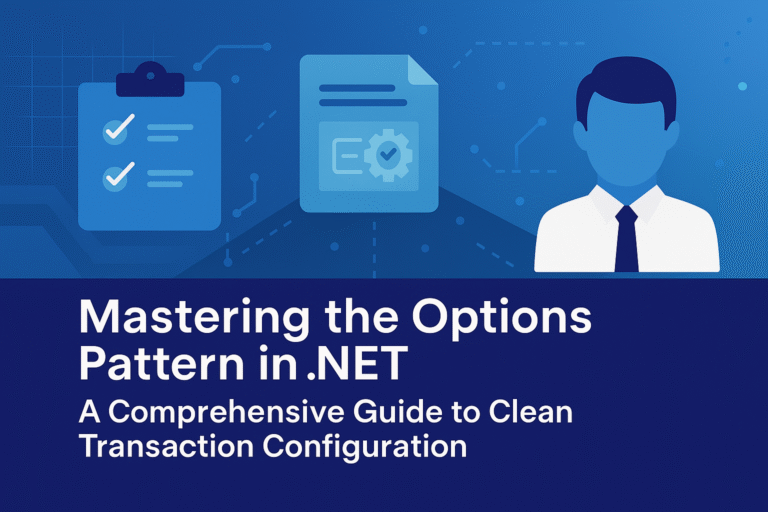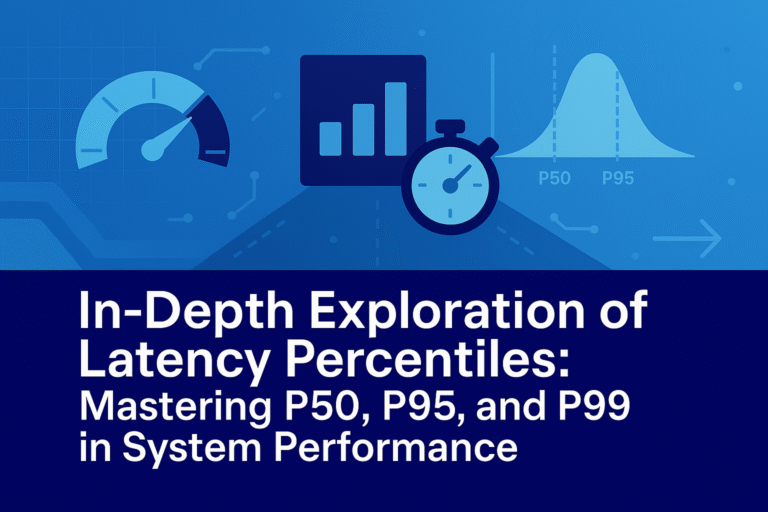System design involves balancing competing constraints to achieve optimal performance, scalability, and reliability. Trade-offs are inherent in this process, as improving one aspect often compromises another. This extensive analysis examines the top 15 trade-offs in system design, focusing on their implications, underlying mechanisms, and strategic considerations. Each trade-off is explored with reference to key principles such as the CAP Theorem, latency reduction techniques, caching strategies, and data structures discussed in prior contexts. The discussion includes applications, advantages, limitations, and real-world examples to provide a thorough understanding for professionals designing distributed systems. These trade-offs guide architects in making informed decisions, ensuring systems like e-commerce platforms (e.g., Amazon) or real-time analytics services (e.g., Twitter) align with specific requirements for cost, performance, and resilience.
1. Consistency vs. Availability (CAP Theorem)
This trade-off stems from the CAP Theorem, which posits that a distributed system cannot simultaneously guarantee consistency, availability, and partition tolerance—only two at a time.
- Mechanism: Consistency requires all nodes to have the latest data (e.g., through synchronous replication), while availability ensures every request receives a response, even during network partitions (e.g., asynchronous replication). Partition tolerance is mandatory in distributed systems, forcing a choice between strong consistency (CP systems like MongoDB) and high availability (AP systems like Cassandra).
- Applications: Strong consistency is used in financial transactions (e.g., DynamoDB with ConsistentRead=true), while high availability is prioritized in social media feeds (e.g., Redis Cluster with eventual consistency).
- Advantages of Consistency: Ensures data accuracy, reducing errors in critical operations (e.g., no stale balances in banking systems).
- Advantages of Availability: Maintains service during failures, achieving 99.99% uptime (e.g., Cassandra serving reads from replicas).
- Limitations: Strong consistency increases latency (10–50ms due to coordination) and reduces availability during partitions. High availability risks stale data (10–100ms lag), potentially leading to inconsistencies.
- Real-World Example: PayPal uses strong consistency in DynamoDB for transactions to avoid double-spending, accepting reduced availability, while Twitter employs eventual consistency in Cassandra for feeds, prioritizing uptime over immediate accuracy.
- Strategic Considerations: Opt for strong consistency in CP-critical systems (e.g., financial services) and availability in AP-tolerant applications (e.g., social platforms). Use tunable systems like DynamoDB to balance based on workload.
2. Latency vs. Throughput
Latency refers to the time for a single operation, while throughput is the number of operations per unit time.
- Mechanism: Low latency often requires optimized paths (e.g., in-memory storage like Redis), but high throughput demands parallel processing (e.g., Redis Cluster sharding), which may introduce overhead (e.g., coordination latency).
- Applications: Low latency is essential for real-time analytics (e.g., Redis < 0.5ms for queries), while high throughput is key for batch processing (e.g., Kafka 1M messages/s).
- Advantages of Low Latency: Enhances user experience (e.g., < 1ms for Redis cache hits).
- Advantages of High Throughput: Handles large volumes (e.g., 2M req/s in Redis Cluster).
- Limitations: Prioritizing latency limits parallelism (e.g., single-threaded Redis event loop), reducing throughput. High throughput adds complexity (e.g., sharding overhead).
- Real-World Example: Uber uses Redis for low-latency geospatial queries (< 1ms for GEORADIUS), while Cassandra handles high-throughput ride logs (1M writes/s), balancing the trade-off with consistent hashing.
- Strategic Considerations: Use in-memory structures for latency-sensitive operations and sharding/replication for throughput-heavy workloads. Measure P99 latency (< 50ms) and throughput to iterate.
3. Performance vs. Cost
Performance involves optimizing speed and efficiency, while cost encompasses infrastructure expenses (e.g., RAM, compute).
- Mechanism: High performance often requires expensive resources (e.g., SSDs for < 1ms I/O, $0.10/GB/month) vs. cheaper alternatives (HDDs for 10ms I/O, $0.01/GB/month).
- Applications: Performance is prioritized in real-time systems (e.g., Redis for < 0.5ms caching), cost in archival storage (e.g., S3 for backups).
- Advantages of High Performance: Reduces latency (< 1ms) and increases throughput (2M req/s).
- Advantages of Low Cost: Enables large-scale storage (e.g., 1PB at $0.01/GB/month).
- Limitations: High performance increases costs (e.g., $0.05/GB/month for Redis RAM), while low cost raises latency (e.g., 10–50ms for HDD).
- Real-World Example: Netflix uses Redis for high-performance caching (< 0.5ms latency) but S3 for cost-effective archival (100PB at $0.02/GB/month), balancing with CDN caching.
- Strategic Considerations: Use cost-benefit analysis: prioritize performance for user-facing operations (e.g., Redis), cost for backend storage (e.g., S3). Measure ROI with metrics like cost per req/s.
4. Scalability vs. Consistency
Scalability involves handling increased load (e.g., horizontal scaling), while consistency ensures data accuracy.
- Mechanism: Scalability often favors eventual consistency (e.g., Redis async replication), while strong consistency requires coordination (e.g., DynamoDB quorum).
- Applications: Scalability is key for social media (e.g., Cassandra for 1M req/s), consistency for finance (e.g., MongoDB).
- Advantages of Scalability: Supports high throughput (e.g., 2M req/s in Redis Cluster).
- Advantages of Consistency: Prevents errors (e.g., no stale data in PayPal transactions).
- Limitations: High scalability risks staleness (10–100ms lag), strong consistency limits scale (50,000 req/s).
- Real-World Example: Twitter uses Cassandra (eventual consistency) for scalable feeds (1M req/s), while PayPal uses DynamoDB (strong consistency) for transactions (100,000 req/s).
- Strategic Considerations: Use tunable systems (e.g., DynamoDB) to balance; apply eventual consistency for non-critical data.
5. Latency vs. Durability
Latency is minimized with in-memory operations, while durability requires persistent storage.
- Mechanism: Low latency uses RAM (e.g., Redis < 0.5ms), durability uses disk (e.g., AOF adds 10% latency).
- Applications: Low latency for caching (e.g., Redis), durability for transactions (e.g., DynamoDB).
- Advantages of Low Latency: Improves user experience (< 1ms).
- Advantages of Durability: Prevents data loss (< 1s with AOF everysec).
- Limitations: Low latency risks volatility, durability increases latency (10–50ms for SSD).
- Real-World Example: Uber uses Redis for low-latency geospatial queries (< 1ms) but Cassandra for durable ride logs (10ms).
- Strategic Considerations: Use async persistence for balance (e.g., Redis AOF everysec).
6. Read Optimization vs. Write Optimization
Read optimization favors data structures like B+ Trees for fast queries, while write optimization favors LSM Trees for high-throughput updates.
- Mechanism: Read-optimized (B+ Trees) enable O(log n) lookups but slow writes; write-optimized (LSM Trees) enable O(1) appends but amplify reads.
- Applications: Read optimization for analytics (e.g., PostgreSQL), write optimization for logging (e.g., Cassandra).
- Advantages of Read Optimization: Low query latency (< 1ms).
- Advantages of Write Optimization: High write throughput (1M/s).
- Limitations: Read optimization slows writes (10–50ms), write optimization amplifies reads (5–10 segments).
- Real-World Example: Netflix uses InfluxDB (write-optimized) for metrics ingestion (1B/day) and Elasticsearch (read-optimized) for searches.
- Strategic Considerations: Use LSM Trees for write-heavy, B+ Trees for read-heavy; hybrid with Redis caching.
7. Space vs. Time
Space optimization minimizes storage (e.g., Bloom Filters), while time optimization minimizes latency (e.g., in-memory storage).
- Mechanism: Space uses compact structures (e.g., Bitmaps), time uses fast access (e.g., Hash Tables).
- Applications: Space for analytics (e.g., Bitmaps in Redis), time for caching (e.g., Redis Strings).
- Advantages of Space Optimization: Low memory (e.g., 125MB for 1B items with Bitmaps).
- Advantages of Time Optimization: Low latency (< 0.5ms).
- Limitations: Space increases computation (e.g., O(n) for Bitmaps), time increases memory (e.g., 1GB for 1M keys).
- Real-World Example: Google uses Bloom Filters (space) for Bigtable queries and Redis (time) for caching.
- Strategic Considerations: Use Bloom Filters for large sets, in-memory for hot data.
8. Availability vs. Durability
Availability ensures high uptime (e.g., replication), while durability ensures data persistence (e.g., disk writes).
- Mechanism: Availability uses replicas (e.g., 3 in Redis Cluster), durability uses AOF or WAL (e.g., < 1s loss).
- Applications: Availability for caching (e.g., Redis), durability for databases (e.g., DynamoDB).
- Advantages of Availability: 99.99% uptime with failover.
- Advantages of Durability: Prevents data loss during crashes.
- Limitations: Availability increases costs (3x storage), durability adds latency (10% for AOF).
- Real-World Example: PayPal uses Redis replication for availability and AOF for durability in transactions.
- Strategic Considerations: Use async replication for balance (e.g., Redis AOF everysec).
9. Synchronous vs. Asynchronous Communication
Synchronous communication (e.g., gRPC) waits for responses, while asynchronous (e.g., Kafka) decouples with queues.
- Mechanism: Sync blocks until reply (e.g., 10–50ms latency), async uses fire-and-forget (e.g., < 1ms).
- Applications: Sync for immediate responses (e.g., API calls), async for analytics (e.g., CDC in Kafka).
- Advantages of Synchronous: Strong consistency, simple flow.
- Advantages of Asynchronous: High throughput (1M/s), resilience to failures.
- Limitations: Sync increases latency, async risks staleness (10–100ms).
- Real-World Example: Uber uses gRPC (sync) for ride matching and Kafka (async) for analytics.
- Strategic Considerations: Use sync for user-facing, async for backend.
10. Monolith vs. Microservices
Monolith is a single unit, while microservices are independent services.
- Mechanism: Monolith centralizes code, microservices decentralize with APIs/queues.
- Applications: Monolith for small apps, microservices for scalable systems (e.g., Netflix).
- Advantages of Monolith: Simplicity, low latency (no network calls).
- Advantages of Microservices: Independent scaling, polyglot persistence.
- Limitations: Monolith scales vertically (limited), microservices add complexity (10–50ms for API calls).
- Real-World Example: Amazon evolved from monolith to microservices for scalability.
- Strategic Considerations: Start with monolith, migrate to microservices as scale grows.
11. Push vs. Pull
Push sends data to consumers, while pull requires consumers to request data.
- Mechanism: Push uses pub/sub (e.g., Kafka), pull uses polling (e.g., Redis BRPOP).
- Applications: Push for real-time notifications (e.g., Slack), pull for batch analytics (e.g., Cassandra).
- Advantages of Push: Low latency (< 1ms for Redis Pub/Sub).
- Advantages of Pull: Consumer control, no overload.
- Limitations: Push risks overload, pull adds latency (1–10s polling).
- Real-World Example: Twitter uses push for notifications, pull for analytics.
- Strategic Considerations: Use push for low-latency, pull for controlled consumption.
12. Stateful vs. Stateless
Stateful services maintain state (e.g., sessions), stateless do not.
- Mechanism: Stateful uses local storage or Redis, stateless uses external stores (e.g., DynamoDB).
- Applications: Stateful for caching (Redis), stateless for APIs (AWS Lambda).
- Advantages of Stateful: Low latency (< 1ms).
- Advantages of Stateless: Easy scaling, no session affinity.
- Limitations: Stateful complicates scaling, stateless increases external calls (10–50ms).
- Real-World Example: Uber uses stateless APIs with Redis for state.
- Strategic Considerations: Use stateless for scalability, stateful for performance.
13. Batch Processing vs. Stream Processing
Batch processes data in groups, stream processes continuously.
- Mechanism: Batch uses ETL (e.g., Spark), stream uses Kafka/Flink.
- Applications: Batch for nightly analytics, stream for real-time (e.g., Netflix recommendations).
- Advantages of Batch: Efficient for large data (e.g., 1PB/day).
- Advantages of Stream: Low latency (< 1s).
- Limitations: Batch has high latency (hours), stream adds complexity.
- Real-World Example: Netflix uses stream for recommendations, batch for reporting.
- Strategic Considerations: Use stream for real-time, batch for cost efficiency.
14. Vertical vs. Horizontal Scaling
Vertical scales by adding resources to a node, horizontal by adding nodes.
- Mechanism: Vertical upgrades hardware (e.g., 16GB to 64GB RAM), horizontal uses sharding/replication.
- Applications: Vertical for monoliths, horizontal for microservices.
- Advantages of Vertical: Simplicity, low latency (no network).
- Advantages of Horizontal: Infinite scale (e.g., 1M to 10M req/s).
- Limitations: Vertical limited by hardware (e.g., 128 cores max), horizontal adds complexity (e.g., consistent hashing).
- Real-World Example: Amazon uses horizontal scaling for DynamoDB.
- Strategic Considerations: Start with vertical, switch to horizontal for growth.
15. Security vs. Performance
Security protects data but adds overhead, performance prioritizes speed.
- Mechanism: Security uses encryption (e.g., AES-256, +1ms latency), performance uses in-memory (e.g., Redis < 1ms).
- Applications: Security for financial data (PayPal), performance for caching (Amazon).
- Advantages of Security: Prevents breaches (e.g., GDPR compliance).
- Advantages of Performance: Low latency (< 1ms).
- Limitations: Security increases latency (e.g., 1–5ms for TLS), performance risks vulnerabilities.
- Real-World Example: PayPal uses AES-256 with performance optimizations.
- Strategic Considerations: Balance with TLS 1.3 resumption (reduces handshake to 1ms).
Trade-Offs and Strategic Considerations
- Consistency vs. Availability: Prioritize consistency for finance (CP), availability for social media (AP).
- Latency vs. Throughput: Optimize latency for user-facing (e.g., Redis), throughput for batch (e.g., Kafka).
- Performance vs. Cost: Use high-performance resources for critical paths, cost-effective for non-critical.
- Scalability vs. Consistency: Use eventual consistency for scale, strong for accuracy.
- Latency vs. Durability: Use async persistence for low latency, sync for durability.
- Read vs. Write Optimization: LSM Trees for writes, B+ Trees for reads.
- Space vs. Time: Bloom Filters for space, in-memory for time.
- Availability vs. Durability: Async replication for availability, sync for durability.
- Synchronous vs. Asynchronous: Sync for immediate responses, async for scalability.
- Monolith vs. Microservices: Monolith for simplicity, microservices for scale.
- Push vs. Pull: Push for low latency, pull for control.
- Stateful vs. Stateless: Stateful for performance, stateless for scalability.
- Batch vs. Stream: Batch for efficiency, stream for real-time.
- Vertical vs. Horizontal Scaling: Vertical for simplicity, horizontal for infinite scale.
- Security vs. Performance: Balance with optimized encryption (e.g., TLS 1.3).
Strategic Approach: Evaluate trade-offs based on requirements (e.g., use AP for scale, CP for accuracy). Measure metrics like P99 latency and cost per req/s to iterate. Use polyglot persistence and patterns like consistent hashing to optimize.
Conclusion
The top 15 trade-offs in system design—ranging from consistency vs. availability to security vs. performance—highlight the inherent compromises required to build scalable, reliable systems. Each trade-off influences architectural decisions, with mechanisms like synchronous replication for consistency or asynchronous communication for scalability providing practical solutions. Real-world examples from Amazon, Netflix, Uber, and Twitter illustrate how these trade-offs are navigated to achieve high performance and resilience. By integrating patterns like microservices, load balancing, and caching with prior concepts such as the CAP Theorem and consistent hashing, architects can create balanced systems that align with specific priorities, ensuring optimal outcomes in distributed environments.



